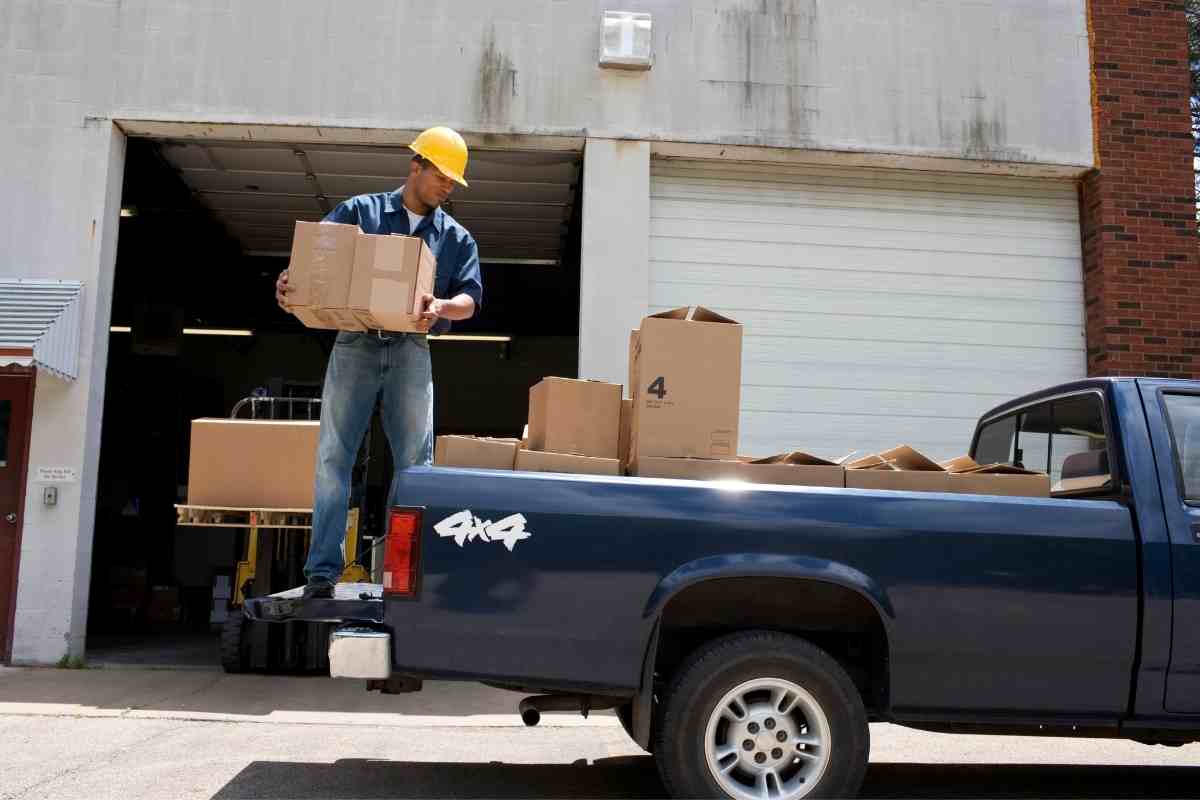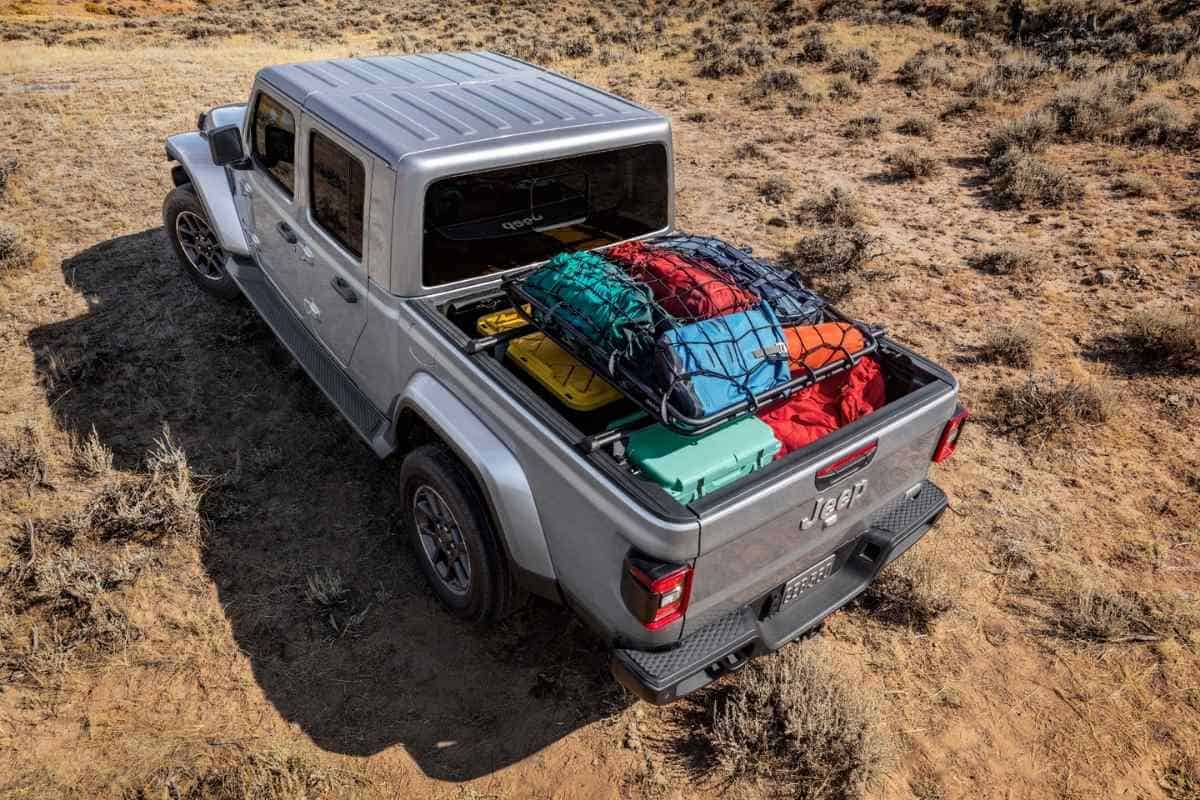How Much Weight Can I Put in The Bed of My Truck?
Trucks are known as the workhorse of the automotive world. They are made for work, but do you know how much your truck can safely hold in its bed?
There are several numbers that one needs to take into account when calculating how much weight a truck can carry the bed, and this article will help you better understand how to calculate that.
How much weight can I put in the bed of my truck?
On average, a regular half-ton truck can hold up around 3,000 lbs. This number is increased to 4000 lbs. for a three-quarter and upwards of 6,000 lbs. for a heavy-duty, one-ton truck.
The amount of weight a truck can carry in its bed is referred to as the payload capacity. While this number may not be as important as towing capacity nowadays, it is still an important factor for some. Towing capacity, on the other hand, is usually much higher and should not be confused with payload capacity.
Not all trucks are built equal, therefore the numbers mentioned above will slightly differ. While some claim to have best in class towing, others may have a higher payload capacity. Regardless of what the intended use of your truck is, knowing these numbers is extremely important.
What happens if you put too much weight in the back of your truck?
Putting too much weight in the back of your truck could have serious consequences such as increased wear and tear and decreased stopping ability.
Suspension, brakes, and tires can be negatively affected by having too much weight in the bed of a truck. Auto manufacturers spend endless amounts of time and money on making sure that they can carry the maximum amount of weight in the bed without putting unwanted strain on other components.
On top of that, by having too much weight in the bed of your truck, the stopping ability of that vehicle is greatly reduced. This in turn increases the likelihood of an accident if a sudden stop is inevitable. The more something weighs, the harder it is to stop. It is common physics.
How do I find out my truck’s payload capacity?
Finding out your payload capacity can be done by subtracting the truck’s curb weight by the GVWR.
The curb weight is calculated by weighing a vehicle with all the fluids in it (oil, coolant, etc.) plus a full tank of gas. Pretty simple, right?
GVWR on the other hand refers to the total amount of weight a certain vehicle can weigh. This includes the truck, passengers and any additional cargo.
By taking the GVWR of the vehicle and subtracting the curb weight, you can easily find out your truck’s payload capacity.
Is towing capacity different from payload capacity?
Yes. Payload capacity refers to the amount of weight a truck can carry, whereas the towing capacity means the amount of weight it can pull.
These two numbers are drastically different as towing capacity is much higher when compared to payload capacity, especially on newer trucks. We have a whole section dedicated to towing here.
For example, the new Ford F-150 can haul 3,200 lbs. when configured correctly, while its towing capacity can be upwards of 13,000 lbs. That is a 10,000 lb. difference!
Can I increase the payload capability of my truck?
Simply put, the answer is no. A truck can only haul what it is rated for from the factory. As previously mentioned, automakers have done extensive testing to come up with that number, and overloading a truck can have detrimental outcomes.
The only way to increase payload capacity is to remove unwanted weight from the vehicle. Like us, most owners love personalizing their vehicles. Putting a new, heavy-duty bumper, or bigger wheels on your trucks may improve the look of it, but it will add to the overall curb weight, therefore lowering the payload capacity.

You may think that upgrading your suspension will increase payload capacity, but in reality, it will only make carrying the weight easier and can reduce wear on driveline components. The only real way to increase payload capacity would be to leave your burly 250 lb. friends at home if you want to haul more weight.
Where do I find out my truck’s weight?
On most vehicles, the tire and loading information is found inside the driver’s door frame. Of course, there are exceptions to this rule.
If you have an older vehicle, such as a classic car, the VIN plate may be the only place to indicate the vehicle’s weight. Sometimes, these plates can be found under the hood, or even be stamped on the engine block of a vehicle, according to itstillruns.com.
If all else fails, the owner’s manual is your saving grace. Those books that do nothing but seem to take up precious space in your glove box will finally come in handy. Or, if you have a newer vehicle, your owner’s manual will be loaded directly on the infotainment system. Regardless of which version you have, curb weight, GVWR and a ton of other useful information will be in there and ready for you to discover.
What can you do to minimize wear on a truck if you are constantly hauling heavy loads?
If you want to minimize wear on your truck while constantly hauling, upgraded suspension and regular oil changes are amongst the best things you can do. While those are not the only precautionary measures you can take, they are the most important.
Upgrade your suspension
Constantly having weight in your bed can ruin a stock suspension system. Yes, trucks are designed to hold a certain amount of weight, but not permanently. Pushing your truck’s payload to its limit daily will no doubt wreak havoc on the suspension components such as shock absorbers and leaf springs.
To combat that, some owners will opt out for beefier shocks, and, in some cases even adding an extra leaf to their suspension. In extreme cases, such as hauling a fifth wheel, some have put in helper bags.
They go in place of the factory shock absorbers and will not leave you looking like you have blown shocks in the back. Let’s be serious, nobody is a fan of the “Carolina Squat”.
Change your fluids on a regular base
If you don’t already do this, please make a habit of it starting immediately. No doubt changing your oil regularly will help prologue the lifespan of your truck’s engine. But did you know that pushing a truck to its limits will require the oil to be changed sooner than normal?
It’s true. The oil will break down a lot quicker and lose its lubrication properties if subjected to extreme heat and pressure. The harder your truck works, the more heat and pressure the engine oil will be subjected to. Replacing your oil quicker than the manufacturer suggests will help make sure you get many more, trouble-free miles from your trusty steed.
Sure, it may cost slightly more now, but think of how much a new engine would cost if it were to need new piston rings, or even worse, seize completely?
Upgrade your brakes
This may come as a shock to some, but your breaks are not able to perform as well when the bed is full vs when it is empty. All jokes aside, stopping becomes a real challenge if you are fully loaded. Stock discs and pads are not intended to stop slow down an extra 3,000 lbs. (on average) continuously.
The more you use your brakes, the more heat they generate. As brake temperatures go up, effectiveness goes down. Continuous hard braking will overheat the brakes and significantly limit their efficiency.

To get more “bite”, you may want to think about increasing your overall rotor diameter. Unfortunately, this may mean having to get bigger wheels in some cases as stock ones may not allow for the additional real estate.
If upgrading your wheels is not an option, getting more air to go cool everything down may be the better option. Grooved and slotted discs have been popular on the race track for years. They not only look cool but will provide an additional way for the hot gasses produced by heavy braking to escape.
No matter which option you go for, make sure to change your brake pads as well. A more aggressive compound will do wonders for helping you stop better. Granted, the potential for noise may be increased. At the end of the day, stopping sooner may have priority over the amount of noise produced.
